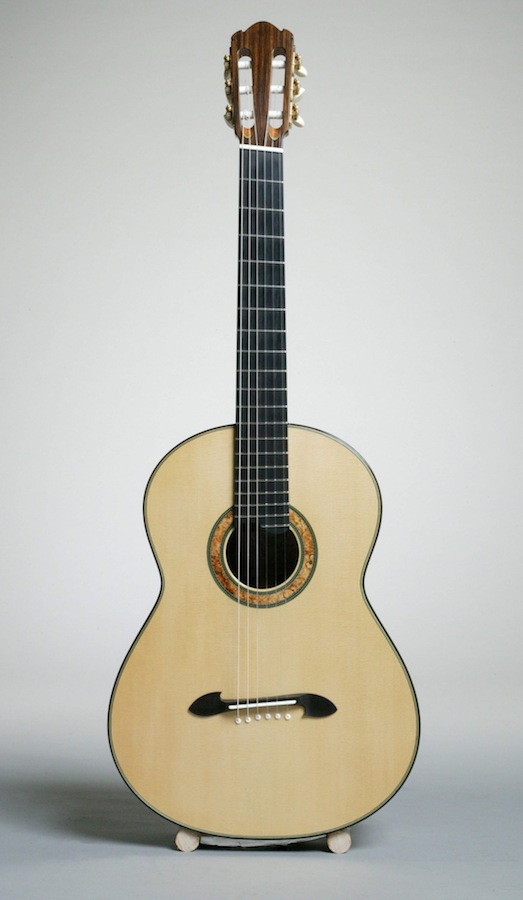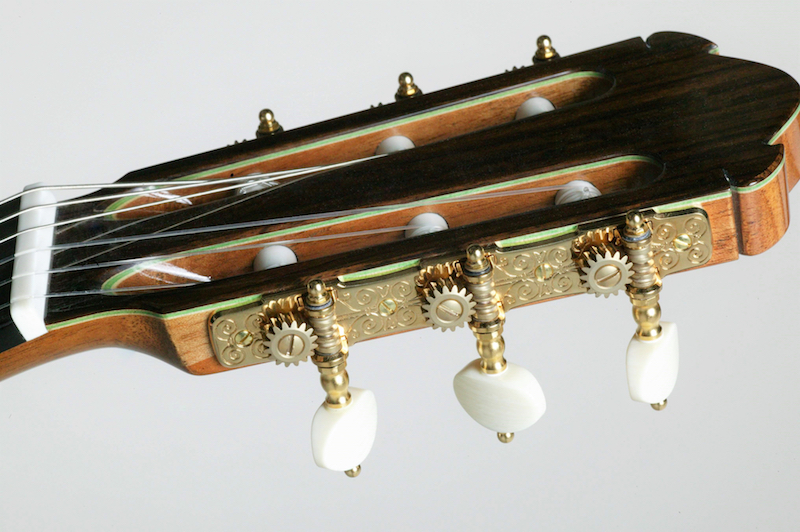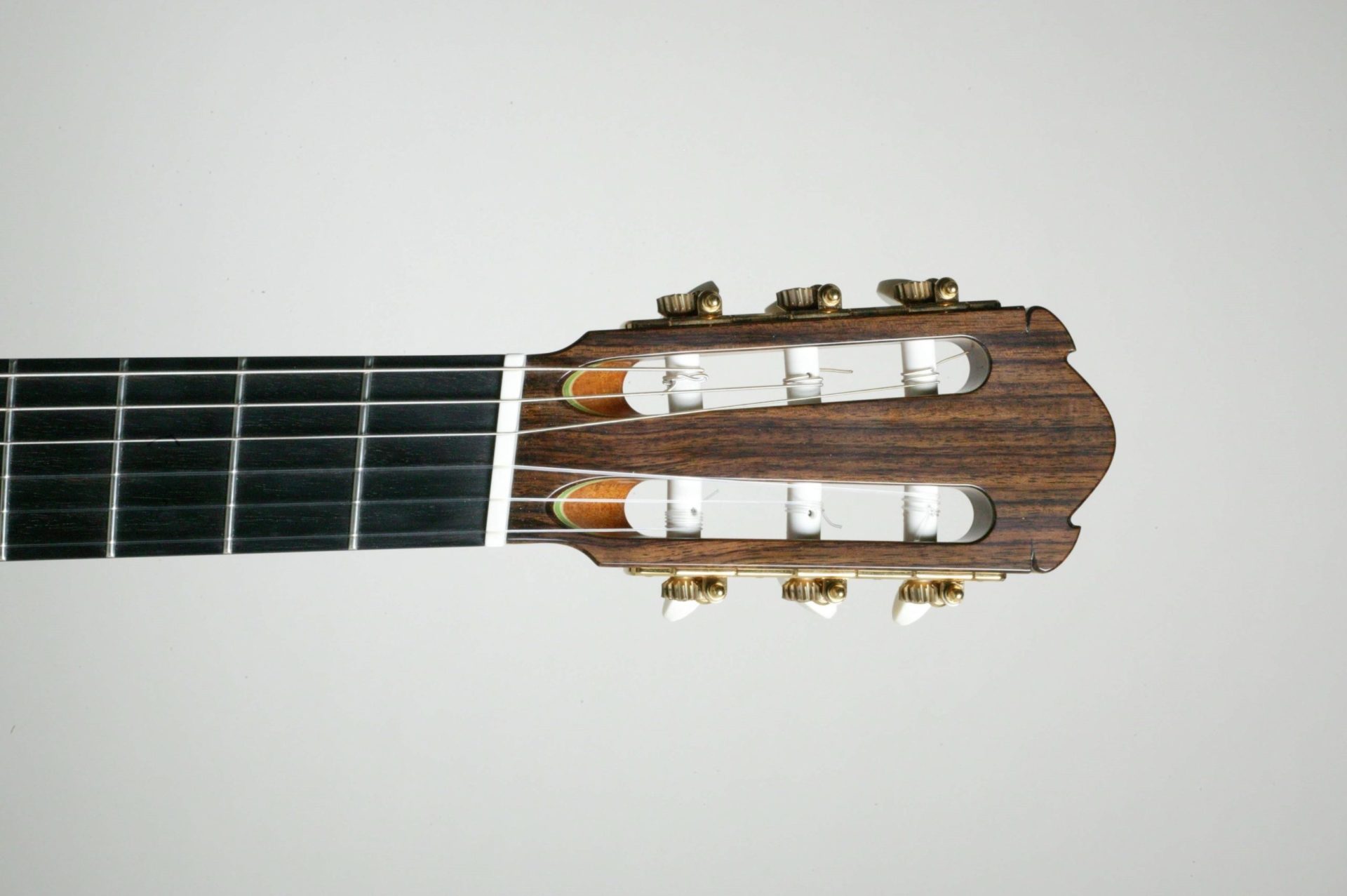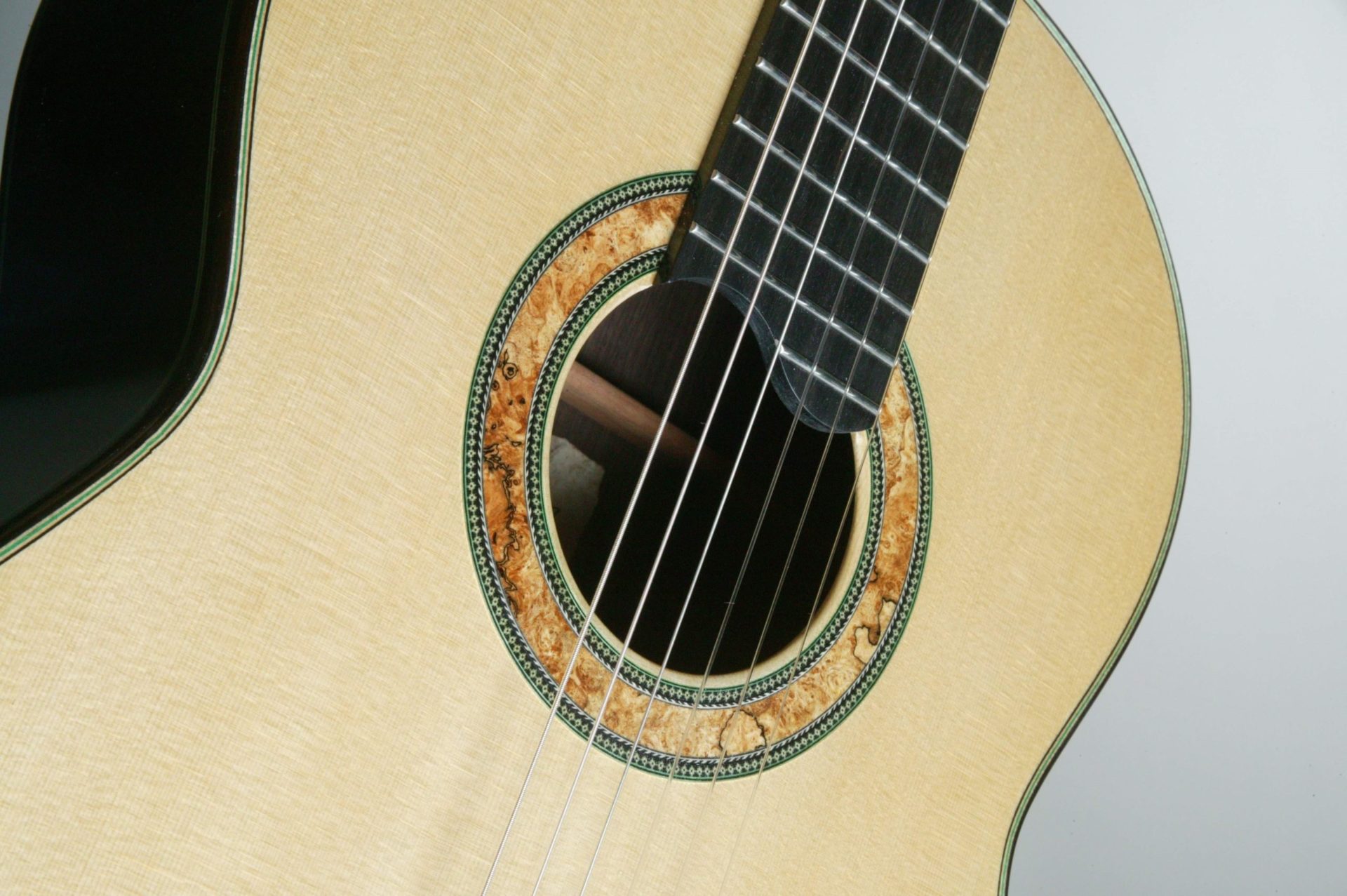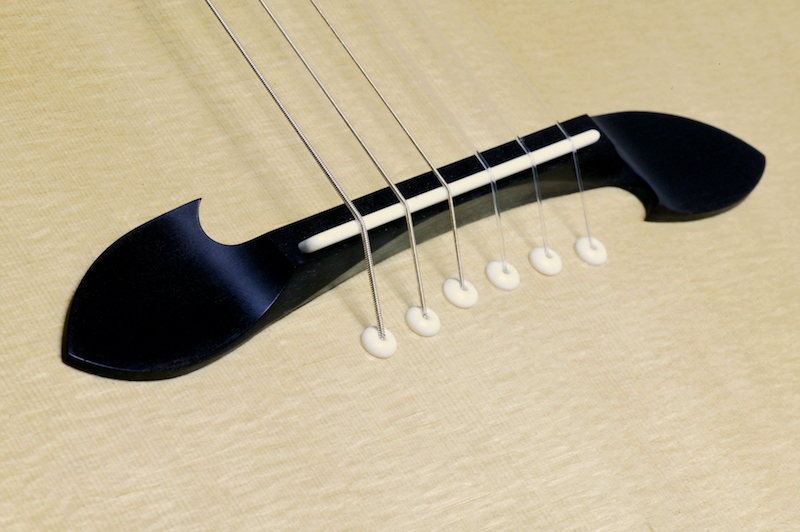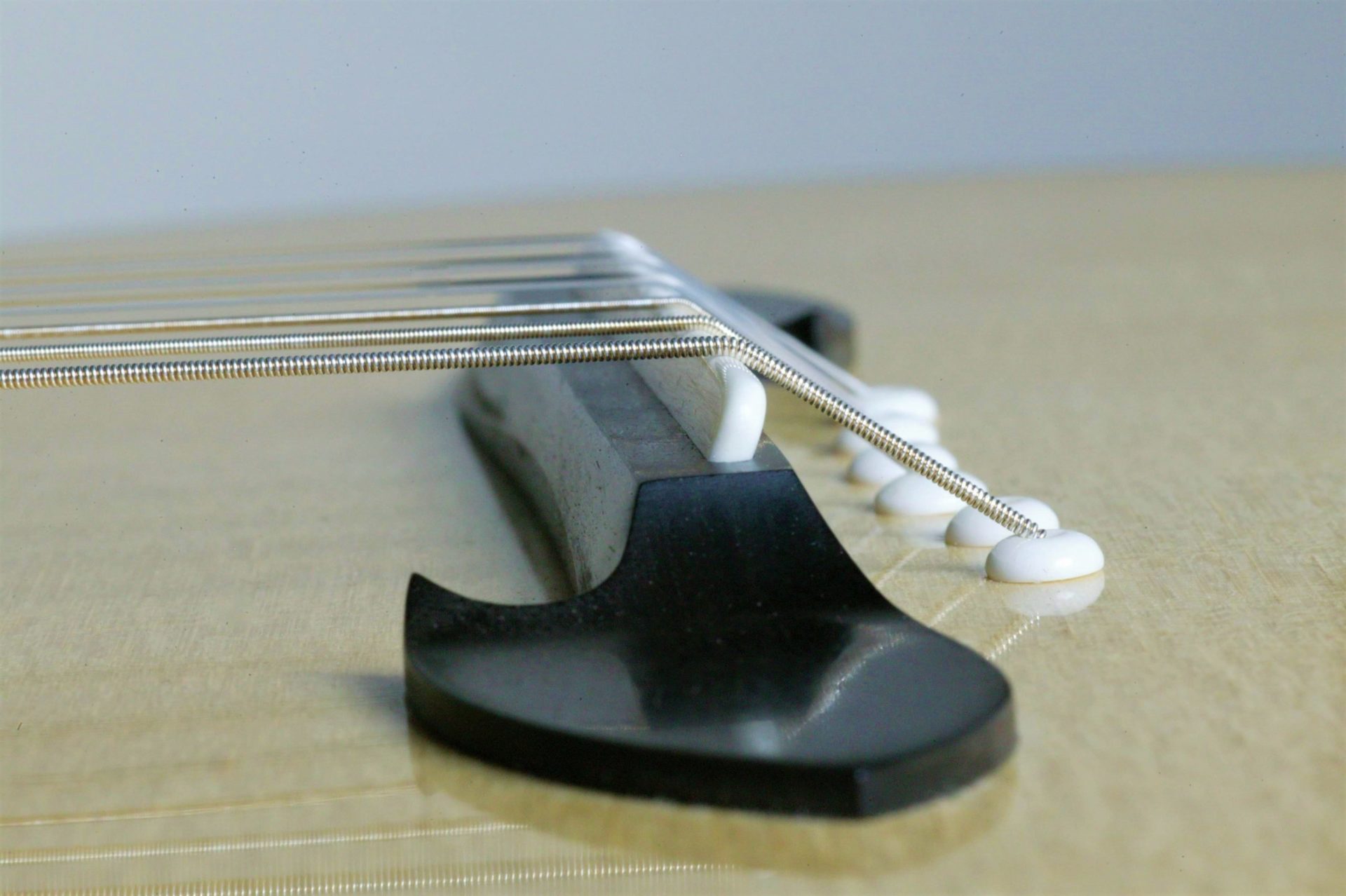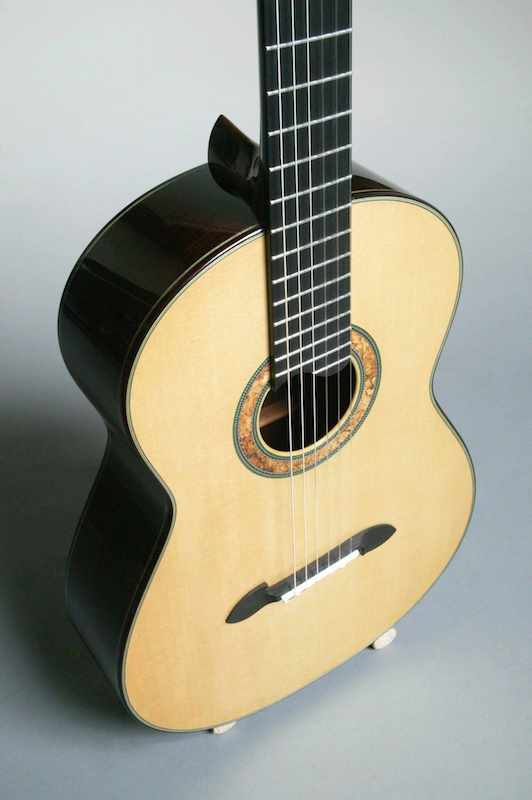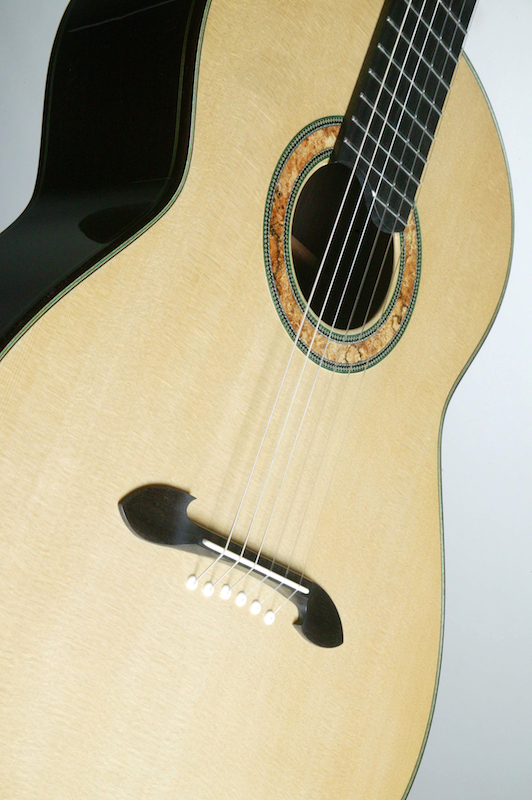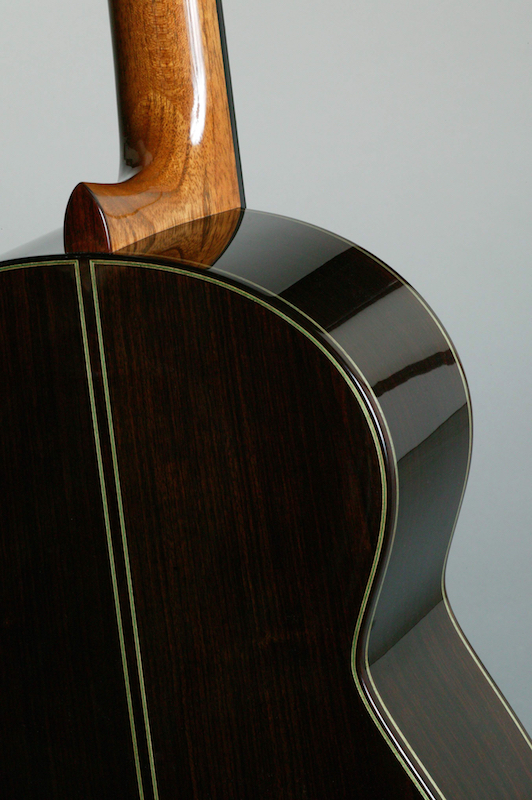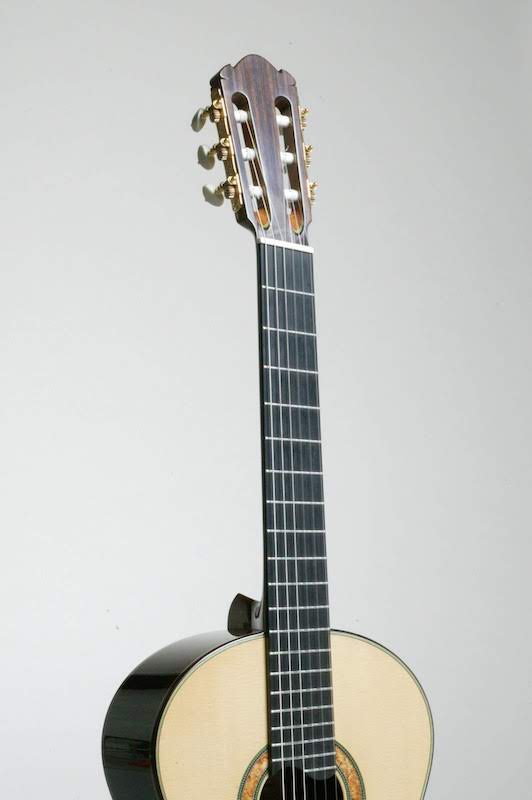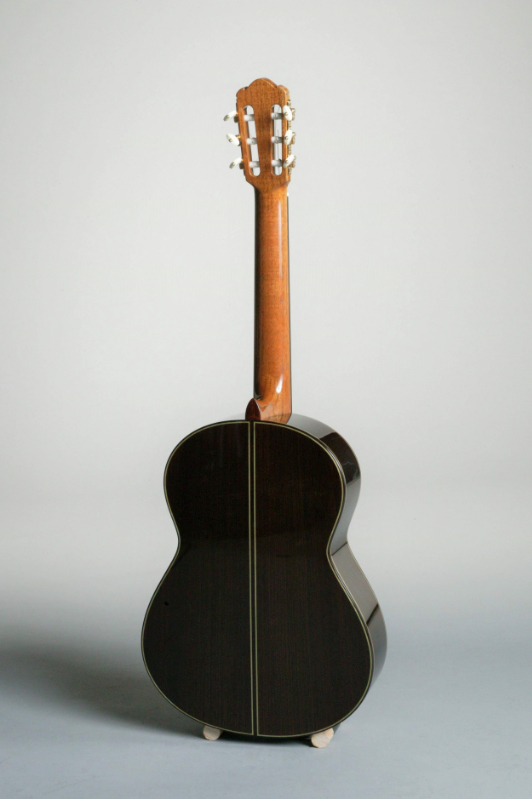
I wanted to incorporate new ideas into this guitar while maintaining a traditional feel. My aim was to create a simple, player-friendly design that would be comfortable to play. I also wanted to bring out the best of the materials, both in terms of aesthetics and their different characteristics.
CHARACTERISTICS & DETAILS OF THE COMPONENTS
A shorter head design was used to improve the guitar’s overall balance. The head is fitted with Hauser style machine heads. Slots were cut in a way that the strings do not come into contact with anything between the nut and the machine heads’ rollers.
The fretboard was slightly rounded to make bar chords easier to play. Bindings were finished with ebony to conceal the fret tongues.
The frets have been fanned, with a string length of 650 mm on the 1st string and 660 mm on the 6th. In addition to making bar chords easier to play, this fretting arrangement produces strong and solid bass notes, and crisp and clear high notes — the most outstanding feature of this guitar. The fretboard has 20 frets for the 1st and 2nd strings.
My innovative Y-bracing system was combined with a fan-bracing system to create an excellent balance between the clarity of high notes and depth of bass notes.
The rosette is made from spaulted maple, showing off the wood’s interesting grains and identifying each individual guitar as a unique piece. No two instruments are the same.
To string this guitar, first pass the string through the eyelet and then pull the end of the string out from the sound hole and tie a knot. This will secure the string to the stopper on the bridge plate once the string is under tension. The bridge will never fall off because the tension of the strings pressing on the saddle presses the bridge against the top.
One of the special characteristics of this guitar is its powerful and clear tone, a product of the tight angles at which the strings press against the saddle. The distances between the saddle and eyelets have been staggered, varying the angles at which different strings extend from the eyelet. This was done to optimize the tension and loudness for each individual string.
In this fanned fretting arrangement, the 12th fret is perpendicular to the body. While this means that the saddle and nut must be placed at relatively steep angles, the saddle does not stand out aesthetically from the overall design, thanks to the use of an asymmetrical bridge that resembles the Chinese calligraphy for the number one.
One final detail has to do with this guitar’s saddle. It has been tilted so that the angles created between the string and saddle on either of its sides are equal, maximizing the efficiency at which tension is transmitted to the top.
The details are subject to change due to continual improvements.
